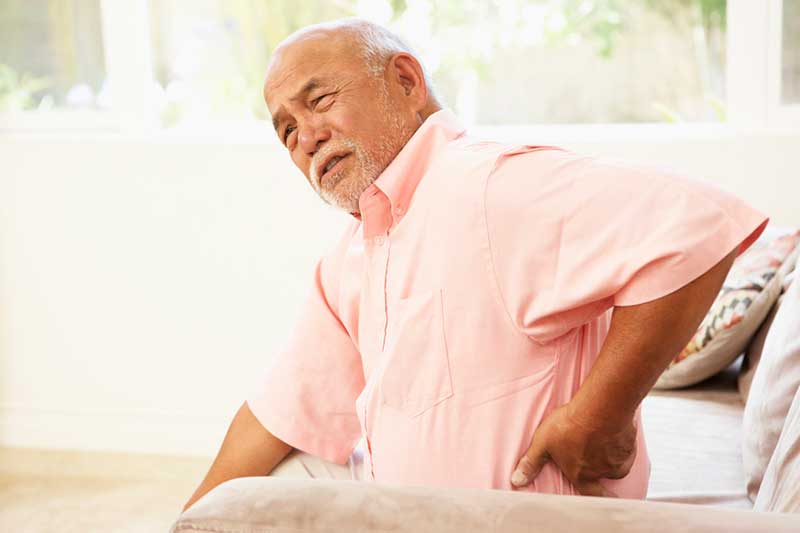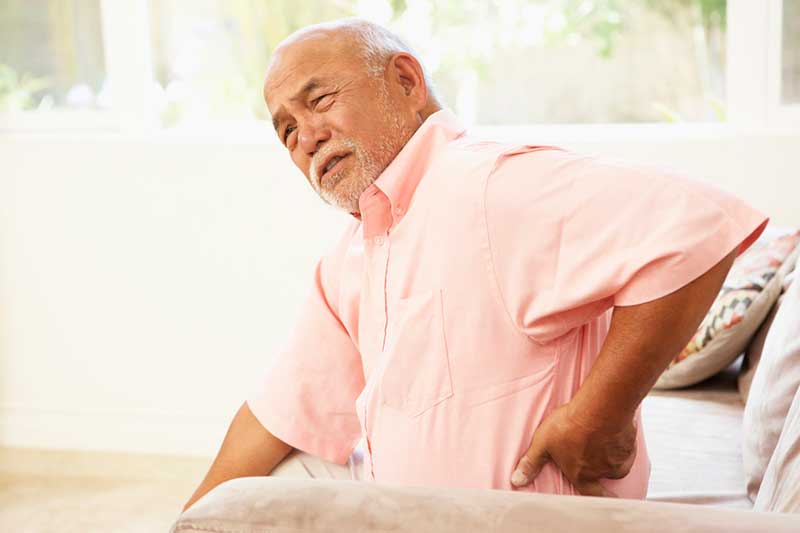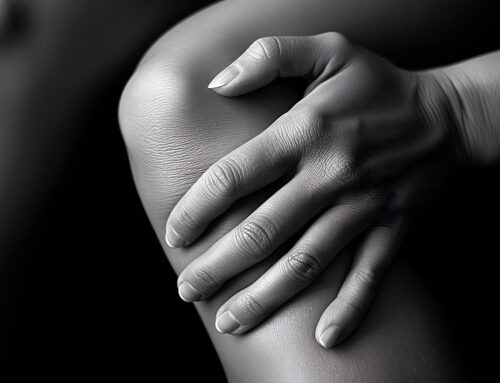Stenosis Treatment in Burlington

Quite often our clinic in Burlington will see patients who have back and leg pain. There are various causes for this. The topic of this week’s blog is spinal stenosis, one cause of back and associated leg pain.
What is Spinal Stenosis?
Our spinal cord is housed in a boney tunnel that runs from the skull down to the very bottom of our lower back. At various levels of the spine, the spinal cord “gives off” nerves that leave the cord and exit the boney tunnel. To explain spinal stenosis, think of the boney tunnel closing in on the nerve structures housed inside.
There are two types of stenosis. Central stenosis is when the spinal cord gets pinched in the narrowing tunnel of the vertebral column. Lateral stenosis can be considered less severe. Instead of the spinal cord being compromised or squished, the nerve leaving the cord is getting pinched in the boney vertebrae as it leaves the area.
Symptoms
Spinal stenosis is a condition that can be very painful and debilitating, depending on the severity. For some, it will be intermittently uncomfortable and may get irritated and symptomatic from time to time depending on what activities were done. For others, the pain can be constant and quite severe. The pain can be present in the back or neck and get aggravated with certain positions. Often, when the nerve is pinched a person will experience nerve symptoms. This can range from numb, tingly, achy, throbbing, burning or electric shock like pain. “Pins and needles” is often used to describe the sensation of nerve impingement. Functional change can also occur, where the patient’s spine does not move as well as it used to and the muscles that aren’t receiving proper innervation can become weak.
Central stenosis has the potential to become very serious. When the spinal cord gets pinched, we can lose control of various bodily functions (bowel/bladder control for example) and can experience weakness, clumsiness and painful symptoms in both legs. In the lumbar spine, this can sometimes be called cauda equine syndrome and is usually an emergency situation. Relative to your typical person with back and leg pain, it can be considered rare.
Causes
Most people who have symptoms related to spinal stenosis are in their 50’s or older. That being said, some may have a congenital, structural abnormality in the spine that makes their tunnels a little smaller. With time, as the spine wears down in our later years, this predisposing abnormality may accelerate the symptom picture.
Stenosis is usually related to some sort of wear and tear on the spine. As the spine degenerates, the debris and deterioration can close in on the nerve structures. Again, the pain can be in one limb / unilateral (lateral stenosis) or both legs / bilateral (as common with central stenosis). Pain can often occur with walking and upright weight bearing activity and relieved with rest. This is not always the case however.
The diagnosis of stenosis is usually achieved through a combination of clinical symptoms, history and diagnostic imaging. For example, a person with congenital predisposition to stenosis can be determined on plain x-ray. MRI or CT can give a better understanding of whether nerve structures are being pinched, but these studies are not always necessary for successful management of stenosis.
Treatment
In worst case scenarios, surgery is necessary. This is relatively rare however. Most people can manage their symptoms through a combination of therapy (chiropractic, physiotherapy, massage therapy and athletic therapy), good habits with posture and work, home exercise and pacing of activities.
Do you have leg and back pain? Give our clinic a call, we can help get you diagnosed properly and then evaluate your treatment options.








